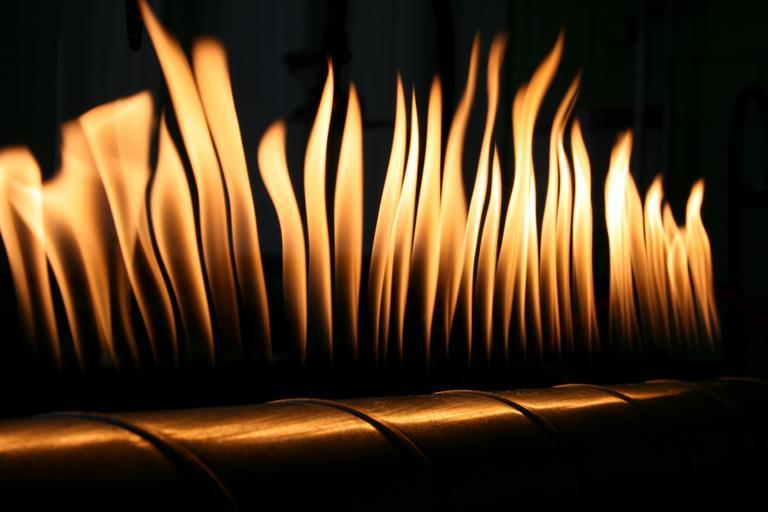MAKE A MEME
View Large Image

| View Original: | Project_365_#196:_150709_Playing_With_Fire!.jpg (3888x2592) | |||
| Download: | Original | Medium | Small | Thumb |
| Courtesy of: | www.flickr.com | More Like This | ||
| Keywords: fire music firemusic fun with flames funwithflames pretty project 365 project365 rubens tube rubenstube standing waves standingwaves black background There's simply nothing more fun than grown men in a chemistry lab arsing about with fire! This fiery beasty is a Rubens' tube. Named after Heinrich Rubens, this is basically a metre long piece of metal ventilation pipe that you drill a long line of small holes in. You then feed it with propane and spark it up. What you get is a long row of surprisingly uniform flames. Then the magic happens. At one end of the tube you place a speaker and start feeding it some sound. The compressions and rarefactions in the tube cause pressure differentials that make some of the flames shoot higher and some disappear. If you're clever with your frequencies you can generate a standing wave which produces static nodal points of high and low pressure, meaning that the flames actually take on the characteristic sinusoidal shape of the sound wave. It's amazing to think when you look at the visualisations in Winamp and Media Player that they've kind of been around for a hundred years! And remember kids, this arsing about was done by kind of professionals in a laboratory environment. Don't try this at home. Really. :) There's simply nothing more fun than grown men in a chemistry lab arsing about with fire! This fiery beasty is a Rubens' tube. Named after Heinrich Rubens, this is basically a metre long piece of metal ventilation pipe that you drill a long line of small holes in. You then feed it with propane and spark it up. What you get is a long row of surprisingly uniform flames. Then the magic happens. At one end of the tube you place a speaker and start feeding it some sound. The compressions and rarefactions in the tube cause pressure differentials that make some of the flames shoot higher and some disappear. If you're clever with your frequencies you can generate a standing wave which produces static nodal points of high and low pressure, meaning that the flames actually take on the characteristic sinusoidal shape of the sound wave. It's amazing to think when you look at the visualisations in Winamp and Media Player that they've kind of been around for a hundred years! And remember kids, this arsing about was done by kind of professionals in a laboratory environment. Don't try this at home. Really. :) | ||||